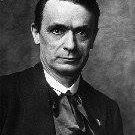Karl R Krause
age ~60
from Kennett Square, PA
- Also known as:
-
- Karl Robert Krause
Karl Krause Phones & Addresses
- Kennett Square, PA
- Wilmington, DE
- 4414 Hillbrook Dr, Orange, TX 77632 • (409)8829329
- Norwell, MA
- Oxford, PA
- Minneapolis, MN
- Landenberg, PA
- New Castle, DE
- 572 Unionville Rd, Kennett Square, PA 19348 • (610)4442195
Work
-
Position:Farmer
Education
-
Degree:High school graduate or higher
Emails
Isbn (Books And Publications)

Us Patents
-
Processes For Reducing The Amount Of Monofluoroacetate In Hydrofluoroolefin Production
view source -
US Patent:20120046505, Feb 23, 2012
-
Filed:May 7, 2010
-
Appl. No.:13/318557
-
Inventors:Mario Joseph Nappa - Newark DE, US
Patricia Cheung - Glen Mills PA, US
Karl R. Krause - Kennett Square PA, US
Michael A. Sisk - Hockessin DE, US -
Assignee:E. I. DU PONT DE NEMOURS AND COMPANY - Wilmington DE
-
International Classification:C07C 17/395
-
US Classification:570180
-
Abstract:A process is disclosed for reducing the amount of monofluoroacetate. The process involves (a) contacting a hydrofluorocarbon with a reactant basic aqueous solution to produce an organic phase solution containing a hydrofluoroolefin and an aqueous phase solution containing a monofluoroacetate; and (b) heating the aqueous phase solution to an effective temperature to reduce the amount of monofluoroacetate in the aqueous phase solution, wherein fluoride concentration in the aqueous phase solution is substantially high. Another process is disclosed for reducing the amount of monofluoroacetate. The process involves (a) contacting a first batch of hydrofluorocarbon with a first batch of reactant basic aqueous solution to produce a first batch of organic phase solution containing a hydrofluoroolefin and a first batch of aqueous phase solution containing a monofluoroacetate; (b) separating the first batch of organic phase solution from the first batch of aqueous phase solution; (c) mixing a second batch of hydrofluorocarbon and a second batch of reactant basic aqueous solution with the separated first batch of organic phase solution to produce a second batch of organic phase solution containing a hydrofluoroolefin and a second batch of aqueous phase solution containing a monofluoroacetate; (d) combining the first batch of aqueous phase solution with the second batch of aqueous phase solution; and (e) heating the combined aqueous phase solutions to an effective temperature to reduce the amount of monofluoroacetate in the combined aqueous phase solutions, wherein fluoride concentration in the combined aqueous phase solutions is substantially high.
-
Catalytic Oxidation Of Volatile Carbon Compounds
view source -
US Patent:56458088, Jul 8, 1997
-
Filed:Aug 7, 1996
-
Appl. No.:8/693727
-
Inventors:Karl Robert Krause - Wilmington DE
-
Assignee:E. I. Du Pont de Nemours and Company - Wilmington DE
-
International Classification:C07C 1124
-
US Classification:4232453
-
Abstract:Process for the conversion of waste gas streams containing volatile carbon compounds to carbon monoxide by contacting the gas stream with an electrically conductive metal or electrically conductive metal oxide catalyst that is heated to reaction temperature by induction heating.
-
Process For Continuous Hydrogenation Of Adiponitrile
view source -
US Patent:59005114, May 4, 1999
-
Filed:Mar 26, 1998
-
Appl. No.:9/048603
-
Inventors:Sourav Kumar Sengupta - Wilmington DE
Theodore Augur Koch - Wilmington DE
Karl Robert Krause - Orange TX -
Assignee:E. I. de Pont de Nemours and Company - Wilmington DE
-
International Classification:C07C20948
-
US Classification:564492
-
Abstract:A process for continuous hydrogenation of adiponitrile (ADN) to hexamethylene diamine (HMD) and optionally to amninocapronitrile (ACN) involving the catalytic hydrogenation of adiponitrile at relatively low temperature (e. g. , 75. degree. C. ) and pressure (e. g. , 500 psig) using a sponge cobalt catalyst (Raney. RTM. Co) in a reaction medium that is substantially free of caustic. In such a process periodic addition of water controls the production of side reaction products and the periodic addition of ammonium hydroxide rejuvenates the catalyst. Hexamethylene diamine is an important intermediate for the synthesis of polyamides such as Nylon-6,6 and aminocapronitrile is a potential intermediate of Nylon-6.
-
Gas Phase Catalyzed Reactions
view source -
US Patent:63159724, Nov 13, 2001
-
Filed:Nov 10, 1998
-
Appl. No.:9/190051
-
Inventors:Mehrdad Mehdizadeh - Wilmington DE
Theodore A. Koch - Wilmington DE
Karl Robert Krause - Orange TX
Sourav Kumar Sengupta - Wilmington DE
Benny Earl Blackwell - Newark DE -
Assignee:E.I. du Pont de Nemours and Company - Wilmington DE
-
International Classification:C01C 302
-
US Classification:423376
-
Abstract:This invention relates to improvements in processes and catalysts for elevated temperature, gas phase, catalyzed reactions in general; it is particularly illustrated by reference to the manufacture of hydrogen cyanide.
-
Apparatus And Process For The Preparation Of Hydrogen Cyanide
view source -
US Patent:54705410, Nov 28, 1995
-
Filed:Dec 28, 1993
-
Appl. No.:8/174525
-
Inventors:Theodore A. Koch - Wilmington DE
Karl R. Krause - Wilmington DE
Mehrdad Mehdizadeh - Wilmington DE -
Assignee:E. I. Du Pont de Nemours and Company - Wilmington DE
-
International Classification:B01J 1908
-
US Classification:422186
-
Abstract:An apparatus and process for production of HCN from ammonia and a hydrocarbon gas by the use of microwave energy using a single mode microwave reactor.
-
Induction Heated Reactor Apparatus
view source -
US Patent:59582731, Sep 28, 1999
-
Filed:Jul 3, 1997
-
Appl. No.:8/887548
-
Inventors:Theodore A. Koch - Wilmington DE
Karl Robert Krause - Orange TX
Mehrdad Mehdizadeh - Wilmington DE
Sourav Kumar Sengupta - Wilmington DE
Benny Earl Blackwell - Newark DE -
Assignee:E. I. du Pont de Nemours and Company - Wilmington DE
-
International Classification:H05B 626
-
US Classification:219651
-
Abstract:An improved induction heated reactor apparatus involving a reaction zone with inlet and outlet and containing an array of electrically conductive catalyst entities (susceptor entities) comprising pellets, rings, or rods containing a core externally coated with a substantially uniform and complete catalyst metal (e. g. , platinum, platinum-iridium alloy, or platinum-rhodium alloy) wrap, coating, or surface impregnated, or containing the catalyst metal as a foam which are inductively heated to produce chemical product from a catalytic reaction. Such an apparatus is particularly useful in the catalytic generation of HCN at elevated temperatures.
-
Apparatus And Process For The Preparation Of Hydrogen Cyanide
view source -
US Patent:55296696, Jun 25, 1996
-
Filed:Jun 6, 1995
-
Appl. No.:8/468392
-
Inventors:Theodore A. Koch - Wilmington DE
Karl R. Krause - Wilmington DE
Mehrdad Mehdizadeh - Wilmington DE -
Assignee:E. I. Du Pont de Nemours and Company - Wilmington DE
-
International Classification:C01B 300
-
US Classification:20415743
-
Abstract:An apparatus and process for production of HCN from ammonia and a hydrocarbon gas by the use of microwave energy using a single mode microwave reactor.
-
Dehydrohalogenation Of Hydrochlorofluorocarbons
view source -
US Patent:20220348524, Nov 3, 2022
-
Filed:Jul 13, 2022
-
Appl. No.:17/812203
-
Inventors:- Wilmington DE, US
Karl Krause - Kennett Square PA, US -
International Classification:C07C 17/25
-
Abstract:A dehydrohalogenation product includes a hydrochlorofluorocarbon mixture of a fluoroolefin of formula RCX═CZQ and a halofluoroalkane of formula RCXYCZQT. R is a perfluorinated alkyl group and X, Z, and Q are independently H or halogen. One of Y and T is H and the other is Cl, Br, or I. About 80% or greater of the hydrochlorofluorocarbon mixture is the fluoroolefin. The dehydrohalogenation product also includes a caustic agent and a solvent. In some embodiments, the dehydrohalogenation product is free of any catalyst, including any phase transfer catalyst.
Resumes

Karl Krause
view source
Karl Krause
view source
Karl Krause
view source
Karl Krause
view sourceLocation:
United States
Youtube
Flickr
Googleplus

Karl Krause

Karl Krause

Karl Krause

Karl Krause

Karl Krause

Karl Krause

Karl Krause

Karl Krause
Myspace

Carl Krause
view source
Karl Krause
view source
Karl Krause
view source
Karl Krause
view source
Karl Krause
view source
Karl Krause
view source
Karl Krause
view source
Karl Krause
view sourceClassmates

Karl Krause, Central High...
view source
Karl Krause, Hale High Sc...
view source
Karl Krause, East High Sc...
view source
Karl Krause | New Mexico ...
view source
Karl Krause, West High Sc...
view source
Lutheran High School West...
view sourceGraduates:
Cindy Hunger (1971-1975),
Cyndi Haws (1982-1986),
Larry Rutherford Rutherford (1984-1988),
Karl Krause (1967-1971),
Ronald Mueller (1955-1959)
Cyndi Haws (1982-1986),
Larry Rutherford Rutherford (1984-1988),
Karl Krause (1967-1971),
Ronald Mueller (1955-1959)

Central High School, Fill...
view sourceGraduates:
Karl Krause (1974-1978),
Deborah Hulse (1970-1974),
Scott Limburg (1973-1977),
Leonard Scutt (1968-1972)
Deborah Hulse (1970-1974),
Scott Limburg (1973-1977),
Leonard Scutt (1968-1972)
Get Report for Karl R Krause from Kennett Square, PA, age ~60


















